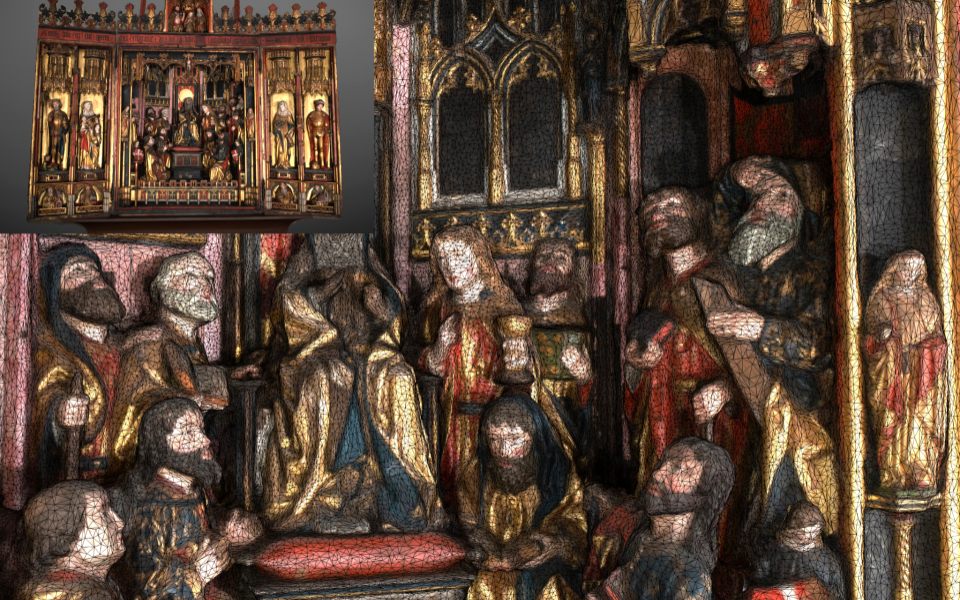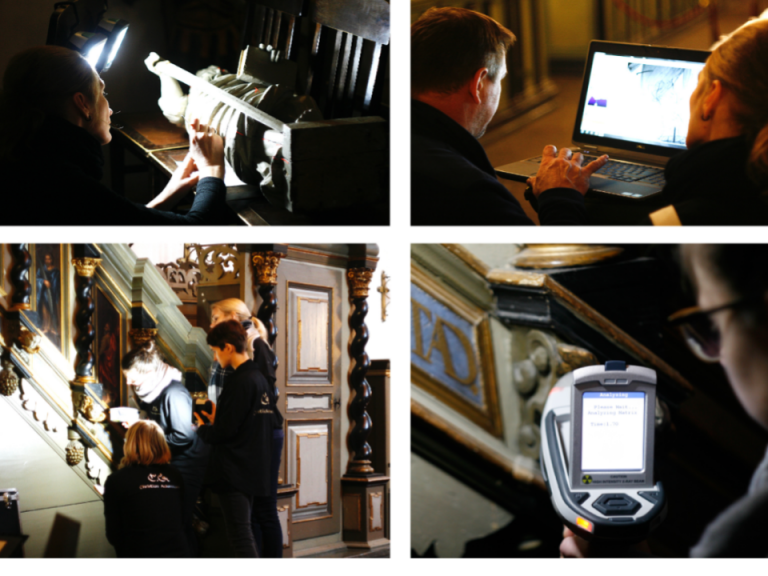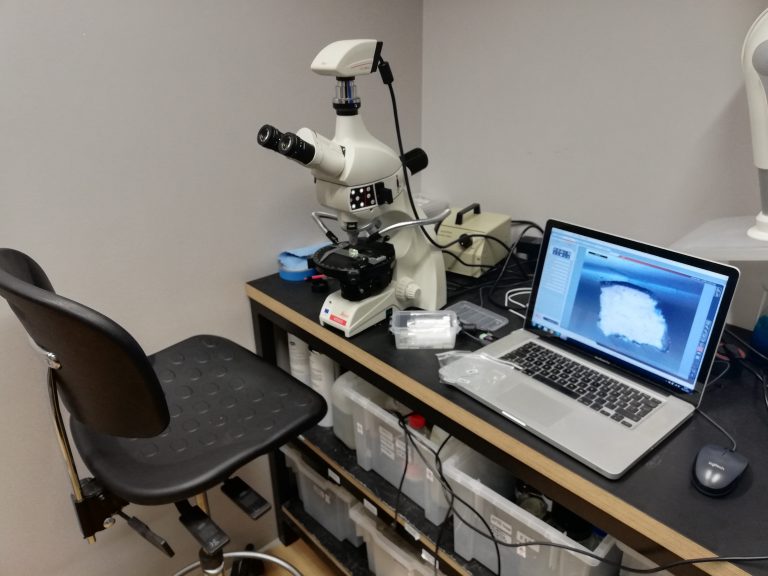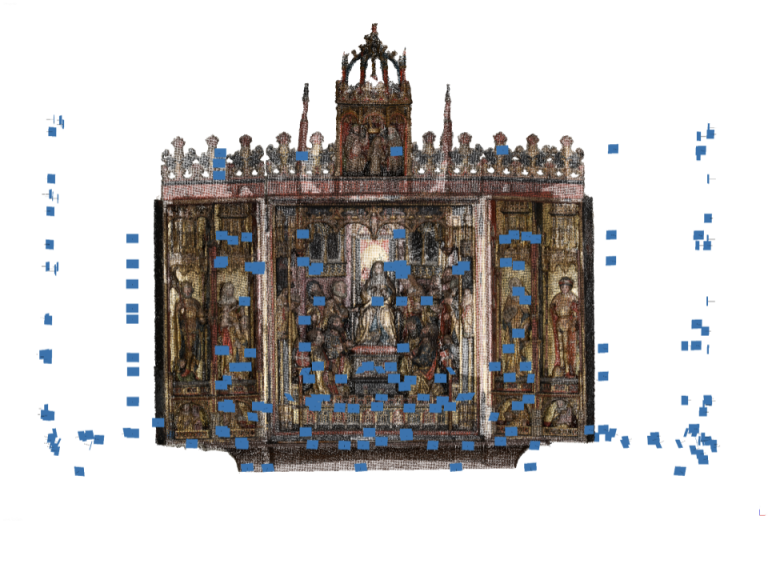MUKOLA

About us
The main goal of the MUKOLA laboratory is to provide expert advice and technical support to both specialists and students as well as experts in the field. In addition to advice, the laboratory offers the opportunity to study cultural heritage in depth and using several different methods with modern technical art history research tools and methodology, incl.: colorimetric measurement, near-infrared and ultraviolet imaging, photogrammetric measurement.
Bases of laboratory activity:
Modern, standard tools
Availability of resources for researchers and students
Operability and mobility of equipment assembly
Development of cooperation networks with other research institutions
Cost efficiency – equipment and tools are carefully selected, with a long service life and versatile possibilities of use
Team and Council
Structural unit MUKOLA is related to the Department of Heritage Protection and Conservation of the Faculty of Arts and Culture.
Team
MUKOLA manager:
Andres Uueni
Leading researchers:
Hilkka Hiiop
Anneli Randla
Hannes Vinnal
Doctoral students:
Varje Õunapuu
Kristiina Ribelus
All research workers and doctoral students of the Department of Heritage Protection and Conservation are involved in the activities of MUKOLA, as well as researchers of other research projects, as needed.
Council
Signe Vahur
University of Tartu, Faculty of Science and Technology, Institute of Chemistry
Associate Professor in Analytical and Physical Chemistry
Riin Rebane
Estonian Environmental Research Centre, Advisor
University of Tartu, Faculty of Science and Technology, Institute of Chemistry, Research Fellow in Analytical and Physical Chemistry
Mart Viljus
Tallinn University of Technology, School of Engineering, Department of Mechanical and Industrial Engineering
Senior Researcher
Alar Läänelaid
University of Tartu, Faculty of Science and Technology, Institute of Ecology and Earth Sciences
Associate professor emeritus
Hembo Pagi
Tallinn University, Researcher
Archaeovision LLC, Visionary
Research directions

The research activity is focused on the needs of the heritage protection and conservation department and meets the modern requirements of the field. The MUKOLA has the necessary technical solutions for color studies (microscopes, tools for cross-section analysis), 3D measurement and imaging studies (infrared, ultraviolet, ranking light).
The important scientific equipment of the laboratory allows to carry out analyzes with different orientations, the complex interpretation of which provides a basis for the interpretation of art and architectural monuments in modern society.
For the exchange of information and the launch of various projects in the field of heritage, the Department of Heritage Protection and Conservation has joined a platform supported by the European Union REACH.
Equipment

Existing research equipment:
Grinding and polishing apparatus for microstructures Metaserv 250 Grinder-Polisher
Polymerization device Technotray Power
Spectrophotometer Konica Minolta CM2300D
Stereozoom microscope Carl Zeiss SteREO Discovery V8
Converted near infrared camera Nikon D610
Portable infrared reflectograph camera Opus Instruments Apollo
Portable 3D scanner Artec Leo.
A database license for the digital archiving and graphic marking system of visuals has been acquired to store the research results. See completed works: muinas.artun.ee
Research methods
Microstratigraphy studies
Microscopic studies of paint layers are part of the daily work of specialists and students. From a research perspective, using these capabilities is the first step to understanding historical paint strata and defining the need for more complex and expensive instrumental analyses.
Heritage surveying and documentation methods
Modern heritage research makes it possible to see inside and through the artefact, to study strata with the help of surveying, imaging and information technologies, to identify and visualize the details, sections, etc. of the researched objects, which are not so easy with other methods. It is often essential to document complex, but also inaccessible places in order to map the condition of objects, including, for example, constructions, etc. The technical study of each such object is essentially a separate scientific study.
High-quality digital documentation and research expands the dataset required for research, it is the basis for reconstructions and existing architectural solutions, and makes the artifact more accessible to both researchers and the public.
In the case of cultural heritage, high-resolution photography of the whole and details is most commonly used. In this regard, the laboratory has modern capabilities.
The combination of photogrammetry and laser scanning has proven to be the most practical way to obtain measurement data, which allows collecting a large amount of precise data about the shape, form, color and placement of an artifact or building.
Documentation works are to a certain extent interdisciplinary research projects, data are collected with precise scientific methods, 2D and 3D solutions. Visualization methods allow specialists to collect and process the obtained data in a new volume and form.
Photogrammetry
Surveying technology based on photography, which allows to create three-dimensional models by measuring information from photographs, whose color representation is significantly more accurate than with laser scanning. Using combinations of algorithms, high-precision 3D models can be produced with different software, which can be used to compare details, simplify data presentation, etc.
Laser scanning
Enables the object to be documented quickly, in detail and with high accuracy. In addition to the object’s geometry, coordinate points, modern laser scanners allow partial storage of colors, which is very important when documenting heritage and interpreting data. The result of the measurement is a high-resolution three-dimensional point cloud consisting of millions of coordinated individual points, on the basis of which 3D models of different levels can be created (e.g. a textured surface model or, if necessary, a general information model of the initial situation of the heritage). It is possible to create drawings and sections both directly from the point cloud and from the created initial situation model.
Such models of the surface and initial situation can be used as a basic design model, e.g. in the development of conservation solutions, as information material in the selection of technical systems and also in heritage management. In the case of heritage, the term Heritage Building Information Model (HBIM) is specifically used for the baseline model. The creation of continuously updated 3D information models and their application in real projects is one of the most important future directions of development.
Ultraviolet
Examination of the coating layer (varnish) and surface of the painting, which is based on the fluorescence effect that occurs under the influence of electromagnetic radiation (UVA, at a wavelength between 360-400nm). Its purpose is to identify signs of previous conservation-restorations.
Infrared
It is used to study the base drawing and pentimenti by recording the electromagnetic radiation that penetrates and is reflected from the paint layers with a sensitive device, e.g. an infrared reflectograph (at wavelengths between 700-2200nm). The purpose of the study is to identify and visualize the handwriting and the changes made by the artist in the base drawing of the painting boards.
Cooperation and development
Improve 3D documentation methods (including crowdsourcing, metadata enrichment)
Visualization of scientific results
Searching for opportunities for cooperation with other economic sectors (e.g. game, film and tourism industries)
Reusing the results of previous studies using new methods
The development and availability of technology provides an opportunity to move from drafting in 2D design environments to workflows that support 3D models. The purpose of the laboratory is to help increase the efficiency of the researchers’ work and enable the cross-use of data.
Projects
Partners
In the course of research, MUKOLA cooperates and exchanges experiences with many different institutions.
The most important cooperation partners
Center for Environmental Investments SA
Tallinn University of Technology
Tallinn University
Tallinn University of Applied Sciences
Tallinn University, Institute of History, Archaeology and Art History
The University of Tartu, Institute of Chemistry
The University of Tartu, Department of Geography
Estonian Tax and Customs Board
News
- June 12.-16. 2023 Cultural Heritage documentation solutions
EKA MUKOLA workshop (T4EU WEEK) - July 27th 2023 – Apollo IRR camera arrived to MUKOLA!
- Oct 24th 2023 – 3D scanning lecture/workshop – results of the workshop were presented during the Composter Festival

